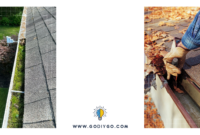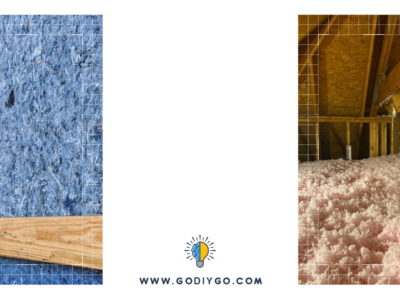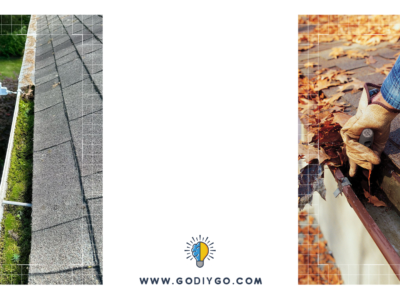You don’t need to be a professional roofer to know that something called “roof rot” sounds bad. Indeed, once it has taken hold it can spread rapidly, ultimately weakening the overall structural integrity of a house. Unchecked, it can even lead to catastrophic problems up to and including the collapse of the roof. Avoiding problems like this is mostly a matter of taking preventative measures. If necessary, roof rot repair is possible, although it’s often a large and expensive job.
Below, we’ll explain how to identify roof rot in your home, as well as the steps you can take to prevent it from spreading. Finally, we’ll discuss your options if a more extensive repair job is required.
Fungus: The Main Culprit
Your roof is primarily composed of wood, which is the main reason it’s so vulnerable to roof rot. There are several species of what is known as xylophagous fungus, which is any type of fungus that causes wood to decay. In nature, this fungus actually serves a critical purpose, as it allows fallen trees to break down and return their nutrients to the earth. However, inside a home, xylophagous fungus can be extremely damaging.
Fungi reproduce by releasing spores, which can be spread by wind, water, or even unknowingly carried on the bodies of birds and other animals. All these spores require to grow are a source of water and a source of food. The wood that makes up the rafters and decking of your roof happens to be an excellent food source, while humidity and rain are usually what provide the moisture.
As the fungus begins to spread, it consumes the cellulose that comprises the wood in your roof. Cellulose happens to be the compound that gives the wood its strength and integrity, so as it is lost, the wood will become spongy and weak. Weakened areas of the roof will ultimately allow more water to enter, further encouraging the growth of xylophagous fungus and ultimately compromising the roof entirely.
Where Does the Moisture Come From?
Like all organisms, the fungus that causes roof rot cannot thrive without some source of moisture. While roofs are built to withstand rain, hail, and snow, the relentless onslaught of the elements will eventually win out. Gradually, natural wear and tear on your rooftops will expose vulnerable areas that will allow water to seep in. As it does so, it will pool in certain areas; these areas will often become the first spots where roof rot takes hold.
Leaky roofs are not the only source of damaging moisture. Humidity in the air can be just as effective at encouraging the growth of xylophagous fungus, especially if the home suffers from inadequate ventilation that prevents the air from being properly circulated. Poor insulation can also lead to roof rot, as warm air inside the home will rise upward toward the roof. Once it makes contact with uninsulated areas, condensation will occur due to the temperature difference. This will cause liquid to pool in those areas, providing fungal spores with the water they need to begin their growth.
Preventative Measures
As moisture is the primary culprit behind the spread of fungus, waterproofing is the first and most crucial preventative measure you can take. A well-constructed roof is excellent at keeping water out, but over time, the various components of that roof will begin to weaken and wear out.
Often, it’s the shingles that become compromised first. They are usually constructed from asphalt, which is designed to allow water to roll straight off of them. However, the constant onslaught of the elements can eventually loosen these shingles. Once the seal between them and the underlayment has been weakened, water may slip through and drip into the decking. Having a professional roofer repair lost and damaged shingles as soon as you notice them is an important part of roof rot repair.
The seams and cracks between the decking of your roof can also be weak points that allow water in. These seams are covered by metal flashing, which over time can begin to loosen, rust, or weaken, ultimately allowing water to slip through. Your roofer can patch holes in the flashing with roofing cement, or if necessary, they can replace larger parts of the flashing entirely.
As mentioned above, poor insulation is another major cause of roof rot. This is usually caused by the material that makes up the insulation degrading over the course of years. Often, you’ll notice it simply due to the fact that your energy bill has begun to tick up over time. By having your insulation regularly inspected and repaired, you’ll be able to both protect from roof rot and keep your energy costs down.
Repairing Advanced Roof Rot
While keeping up to date with preventative maintenance is the best way to ensure your roof remains in good condition for many years, in some cases, roof rot can spread undetected for a long time before it is caught. When this happens, prevention is no longer enough. Instead, a more extensive repair job may be required.
As with any roofing task, roof rot repair should always be performed by a licensed professional. Only certified roofers will have the appropriate safety training and specialized equipment to perform the task. Look for companies like Interstate Roofing, which specializes in rot repair.
Generally, anything with rot will have to be removed, though some may opt to use chemicals to stop it. Roofers will remove decking (and even rafters) that are no longer structurally sound and replace
In some cases, the roof rot will be severe enough to necessitate the replacement of the entire roof. If a complete roof replacement is required, your roofer will need to strip away all the existing elements first.
A new roof that has been installed can last as long as 20 years, provided it is properly maintained. To ensure that roof rot does not take hold again, ensure that a professional roofer performs regular inspections and periodic repair work.
















